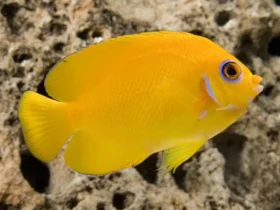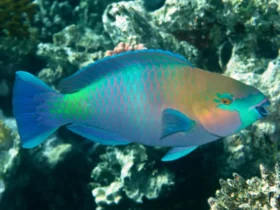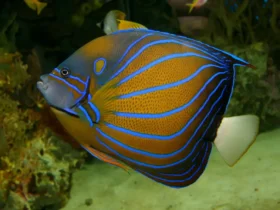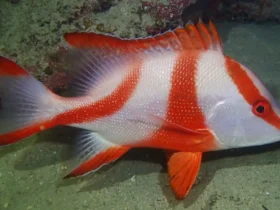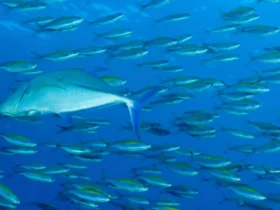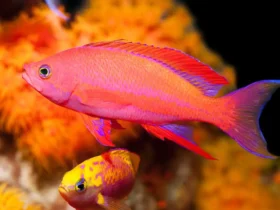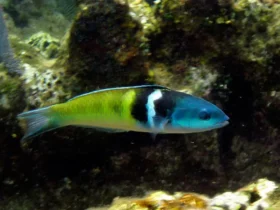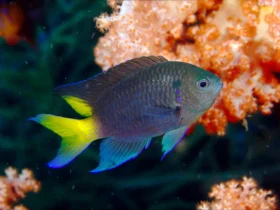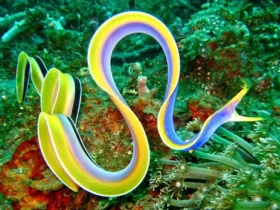The Chrysurus Angelfish, scientifically known as Pomacanthus chrysurus, is a marine angelfish species that belongs to the family Pomacanthidae. Here’s some information about the Chrysurus Angelfish:
Appearance: The Chrysurus Angelfish is a beautifully colored fish with a distinctive and eye-catching appearance. It has a deep, oval-shaped body that is predominantly black. The body is adorned with vertical bands of vibrant yellow or orange that extend from the head to the tail. The edges of the fins also exhibit a contrasting blue coloration. As the fish matures, the bands on its body become more pronounced.
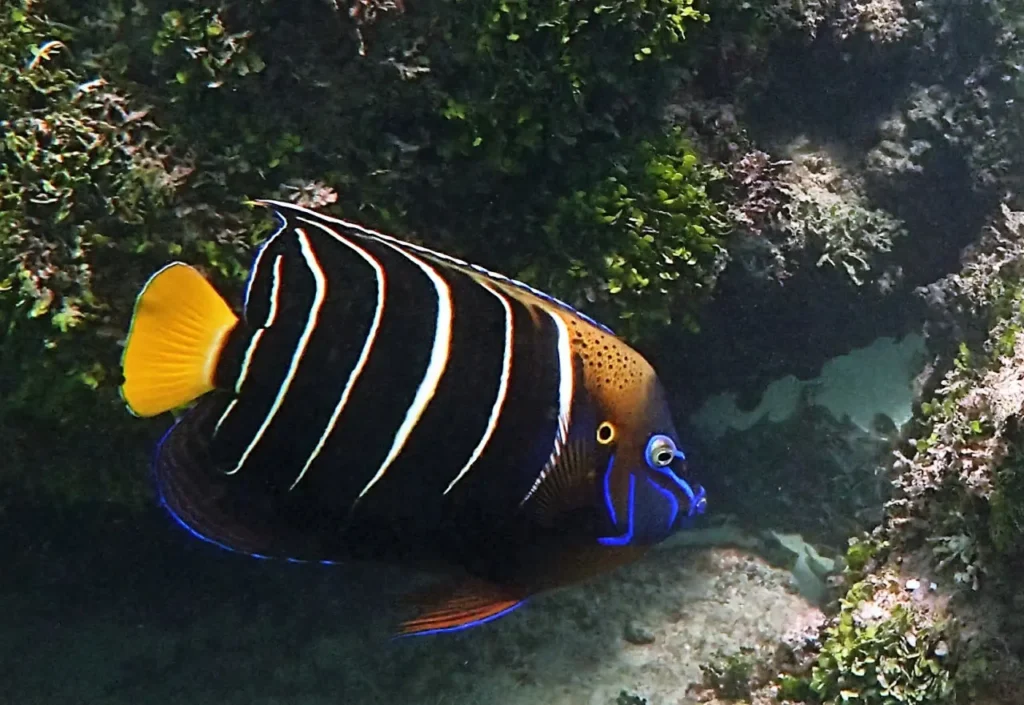
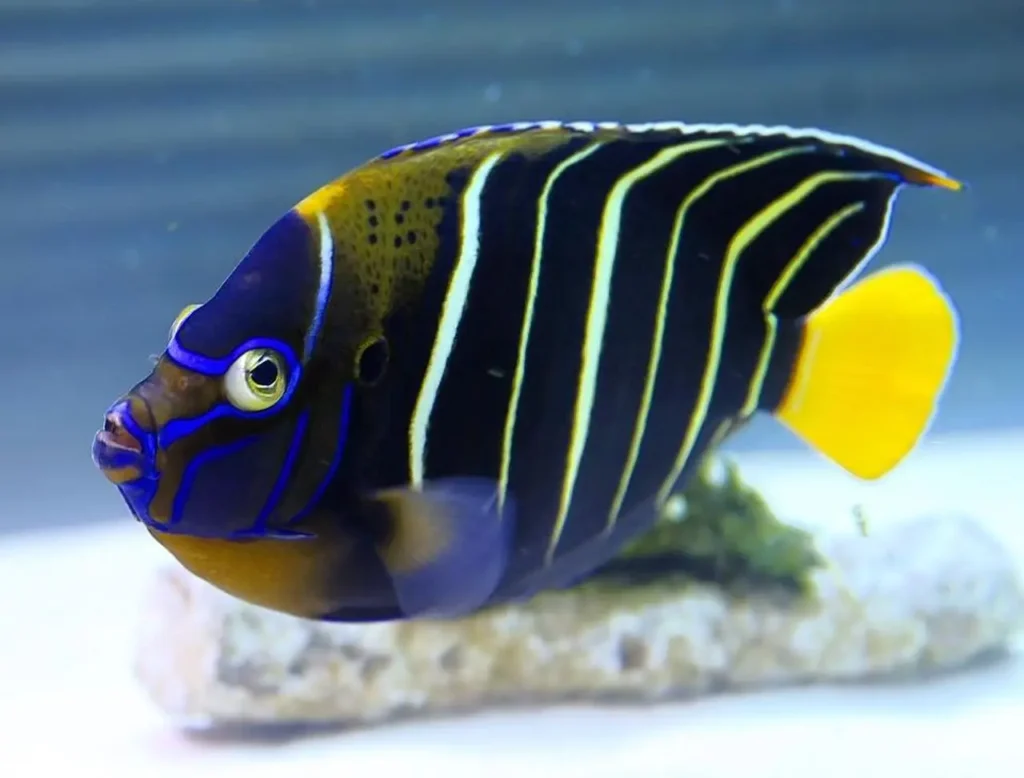
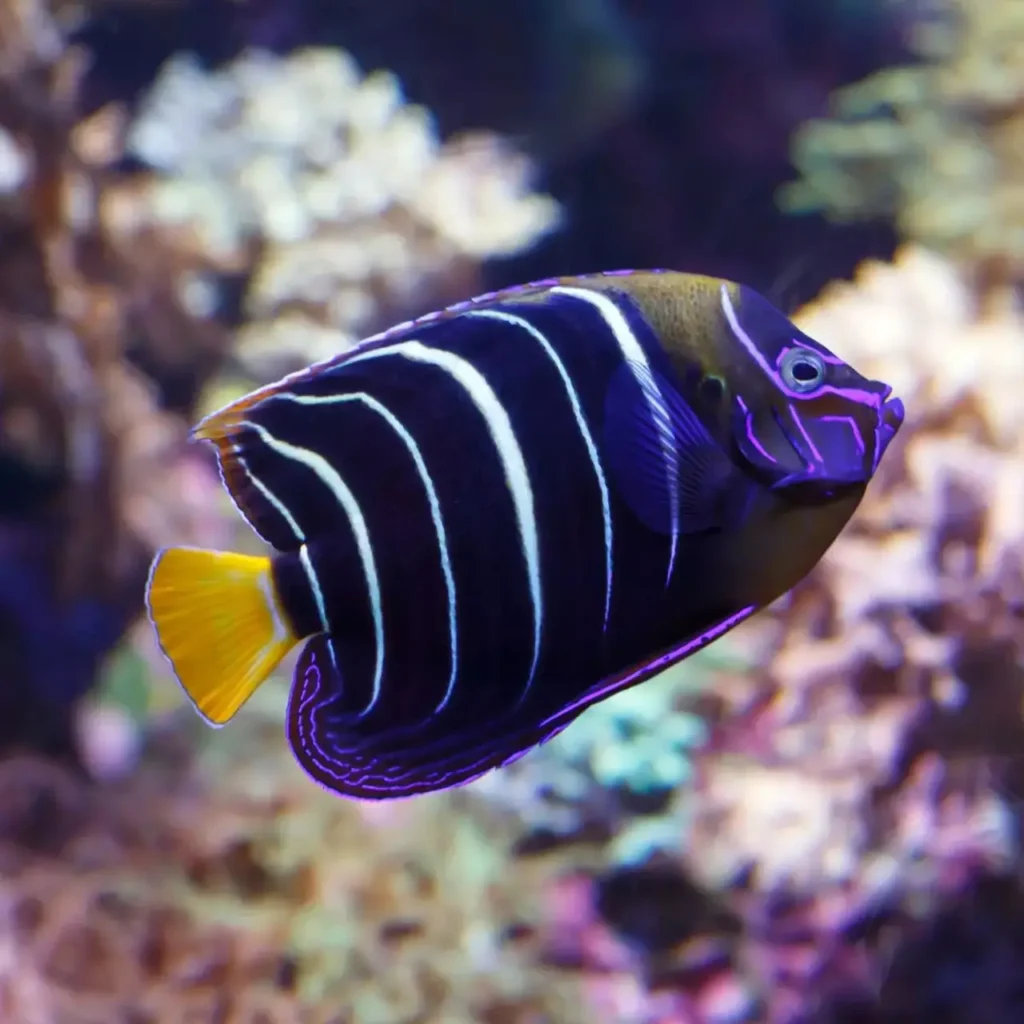
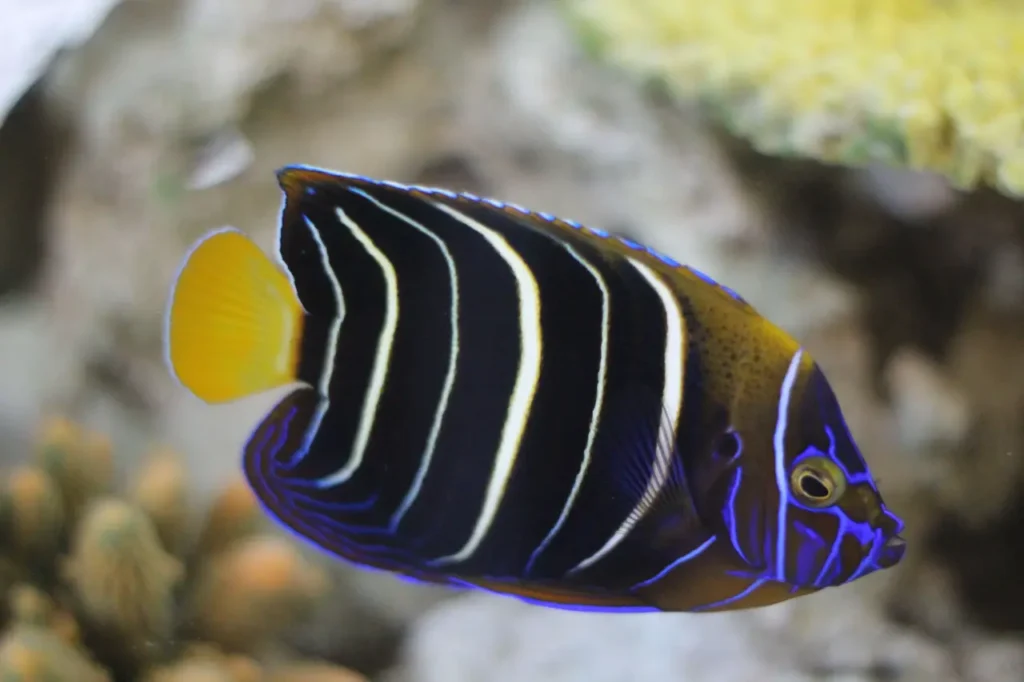
Size: Chrysurus Angelfish can grow up to about 14 inches (35 cm) in length, making them a relatively large species of angelfish.
Distribution and Habitat: This species is found in the tropical waters of the western Atlantic Ocean. Its range extends from the coast of Florida in the United States, through the Caribbean Sea, to the northern coast of South America. Chrysurus Angelfish inhabit coral reefs, preferring areas with abundant coral growth and rocky formations.
Behavior: Chrysurus Angelfish are generally solitary or form pairs. They are known for their territorial behavior, defending their chosen area on the reef from other fish species. They primarily feed on a diet consisting of sponges, tunicates, and other benthic invertebrates.
Conservation Status: The Chrysurus Angelfish is not currently listed as endangered. However, like many reef-dwelling species, it can be susceptible to habitat degradation, overfishing, and other threats associated with human activities. Sustainable management practices and conservation efforts are crucial to ensure the long-term survival of this species and its habitat.
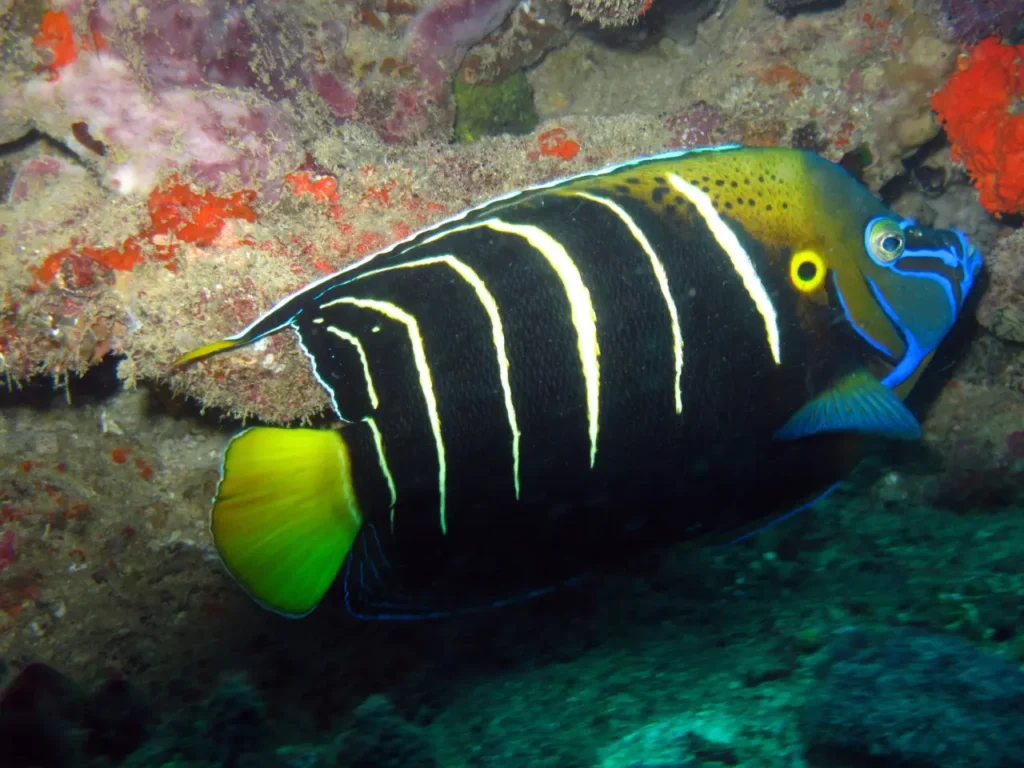
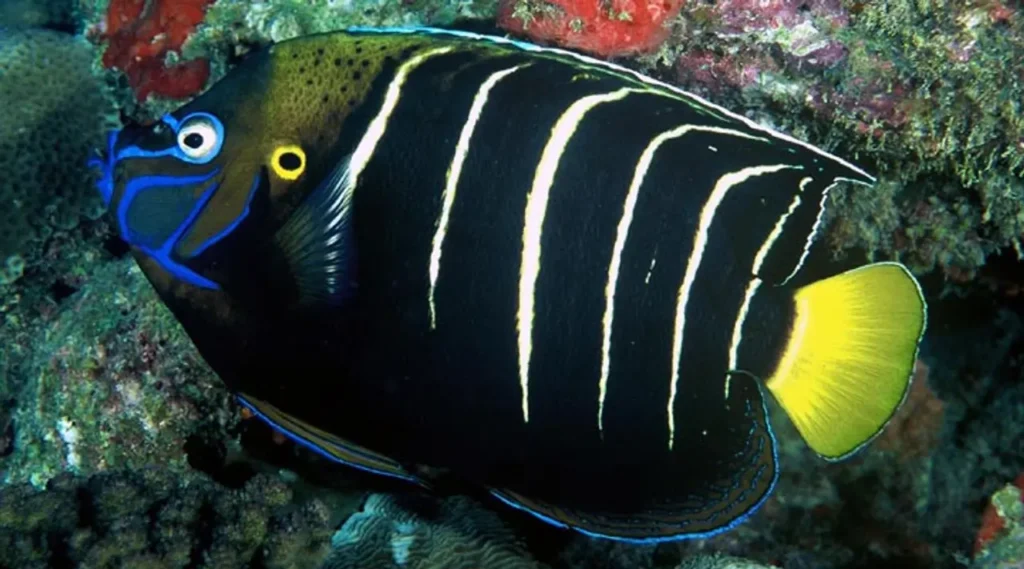
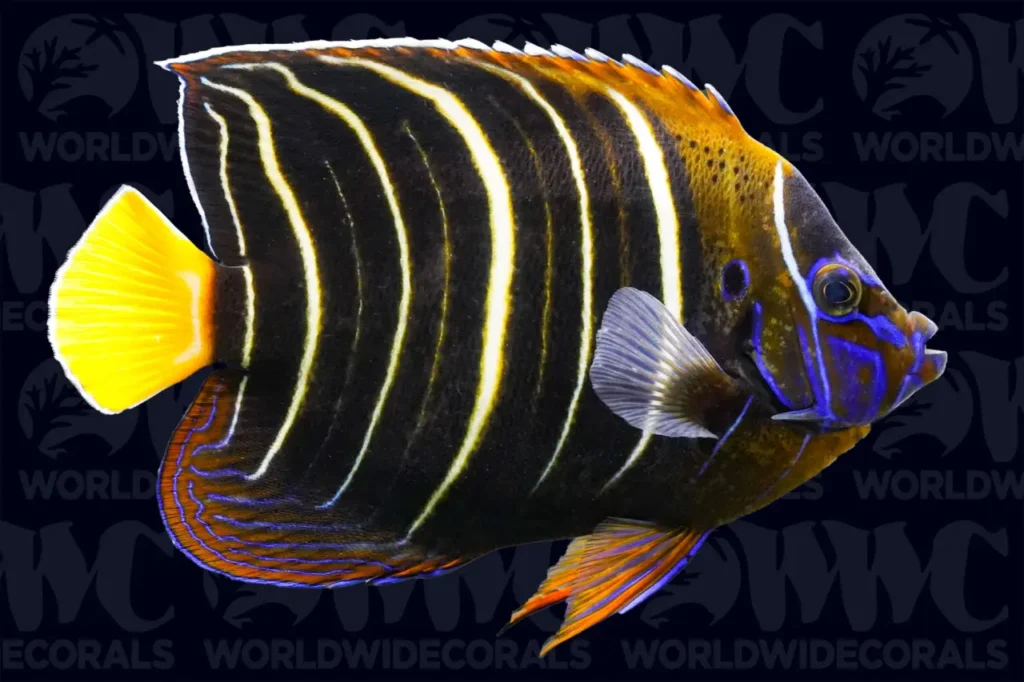
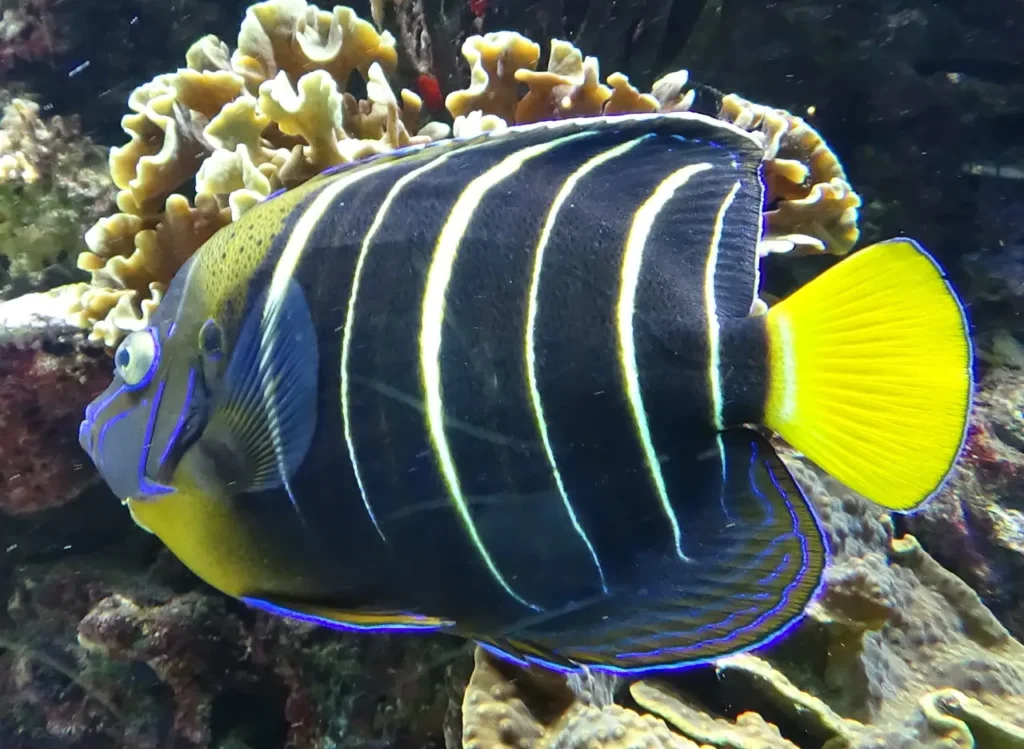
The Chrysurus Angelfish is highly regarded by marine aquarium enthusiasts for its striking appearance. However, it requires a large tank with appropriate water quality and a varied diet to thrive in captivity. It is important to source Chrysurus Angelfish from reputable and sustainable sources to ensure their welfare and the conservation of wild populations.
